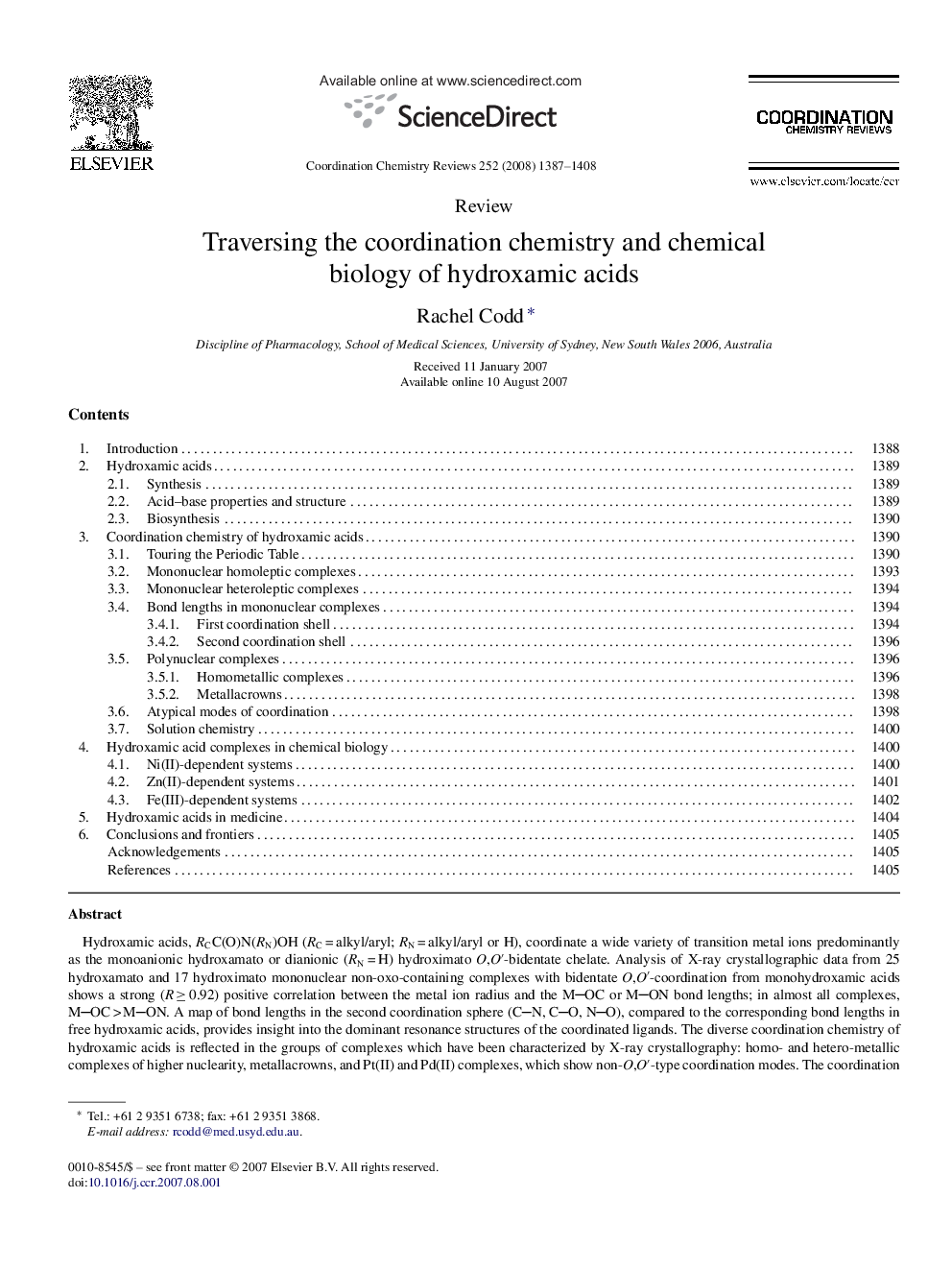| Article ID | Journal | Published Year | Pages | File Type |
|---|---|---|---|---|
| 1301235 | Coordination Chemistry Reviews | 2008 | 22 Pages |
Hydroxamic acids, RCC(O)N(RN)OH (RC = alkyl/aryl; RN = alkyl/aryl or H), coordinate a wide variety of transition metal ions predominantly as the monoanionic hydroxamato or dianionic (RN = H) hydroximato O,O′-bidentate chelate. Analysis of X-ray crystallographic data from 25 hydroxamato and 17 hydroximato mononuclear non-oxo-containing complexes with bidentate O,O′-coordination from monohydroxamic acids shows a strong (R ≥ 0.92) positive correlation between the metal ion radius and the MOC or MON bond lengths; in almost all complexes, MOC > MON. A map of bond lengths in the second coordination sphere (CN, CO, NO), compared to the corresponding bond lengths in free hydroxamic acids, provides insight into the dominant resonance structures of the coordinated ligands. The diverse coordination chemistry of hydroxamic acids is reflected in the groups of complexes which have been characterized by X-ray crystallography: homo- and hetero-metallic complexes of higher nuclearity, metallacrowns, and Pt(II) and Pd(II) complexes, which show non-O,O′-type coordination modes. The coordination chemistry of hydroxamic acids is relevant in the context of chemical biology since these bioligands: (i) coordinate metal sites in the Ni(II)-containing metalloprotein, urease, and the Zn(II)-containing metalloproteins, matrix metalloproteases (MMPs), carbonic anhydrase and tumor necrosis factor-α converting enzyme (TACE); and (ii) feature as the Fe(III)-binding functional groups in bacterially derived Fe(III) sequestration molecules called siderophores. Each of (i) and (ii) couples into aspects of human medicine, in terms of hydroxamic acid-based inhibition of MMPs and related enzymes and the treatment of Fe(III) overload disease, which is currently treated using the mesylate salt of desferrioxamine B (DFOB), a linear trihydroxamic acid originally sourced from the soil bacterium, Streptomyces pilosus. The X-ray crystal structure of Fe(III)-loaded DFOB (ferrioxamine B: FOB) bound to the iron-siderophore periplasmic transport protein from Escherichia coli (FhuD) shows that FOB adopts a chiral and geometric form in the binary FOB–FhuD complex that is distinct from that observed in free FOB.
